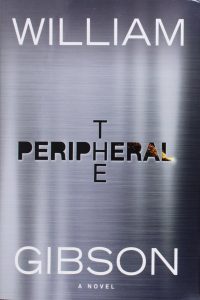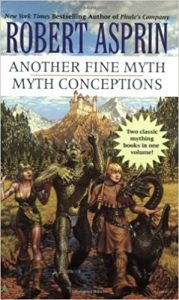
Book Review: The Peripheral by William Gibson
Just finished reading the new William Gibson book, The Peripheral. I am honestly never certain how to review the newer Gibson books (generally starting with Pattern Recognition).
Gibson is one of those authors who the reader must trust. You would think that given the length of his books compared to say, Stephenson’s books, it would be fairly easy to do so. But you have to trust Stephenson through only half the book (roughly) before everything really starts coming together. You often have to trust Gibson through 90%. And while that’s still fewer pages, it can be really frustrating.
At the same time, Gibson places absolute trust in the reader. He does not spend time explaining or hand holding the reader from one step to another. He puts the information where he feels it needs to be in the books and trusts the reader will pick up on that. You have to make sense of the book for yourself. He does not do it for you.
All of that said, The Peripheral is narratively a much more straight forward book then the Blue Ant Trilogy (Spook Country really being the “worst” offender). The story is the story. It only takes 25% (or less) of the book for you to know how all the characters are connected, for the reader to know how their stories are caught up in one another’s.
But Gibson’s main “need to know” storytelling style – he tells you what you need to know, when you need to know it, and not any bit extra or a moment sooner – remains in play. Much of the really important action of the book happens off page. One of the most influential characters (much like Bigend in the Blue Ant books) actually has very little screen time. Chapters in the book are short to begin with, just a few pages long, but scenes that include this character are often only a couple paragraphs.
The story of The Peripheral is a natural follow up to the Blue Ant books, specifically the end of Zero History, even if it’s not part of that series. SPOILER ALTER IF YOU HAVEN’T READ Zero History. At the end of that book, Bigend has technology that allows him to see a few seconds into the future. In The Peripheral, the future has a technology that allows them to connect with the past. And the story basically starts when a person from the past witnesses a crime in the future.
As with all Gibson books, it is the characters that drive the story. The fact that so much important stuff happens off screen, happens with a wave of a wand, did not bother me because I did not care about the plot points nearly as much as I did the characters. Understanding their relationships and watching them change and grow was much more interesting than any description of the technology could have been.
At the same time, I know when I read this book again (because I will read it again), I will pick up things I missed the first time round, including, likely, a better understanding of the technology Gibson has imagined, and seeing more hints and clues about what is happening off the page.
In the end, it is the end of books that determine if I will re-read them or recommend them to others. (The First Law books by Joe Abercrombe were well written – I read all three of them. And yet, due to how the trilogy ended, I won’t read them again, and won’t even recommend them. Whereas the end of The Somnambulist is such that I want other people to read it so I have someone to complain about it to, and I have yet to pick up another Jonathan Barnes book.) In The Peripheral, Gibson does not shy away from “reality”, for darkness and how terrible people can be to each other. But he manages to end, as he always does, on a note of hope. He reminds us that there are good people out there, and good people can make a difference, even if it is just a small one. Because small changes can lead to big changes.




